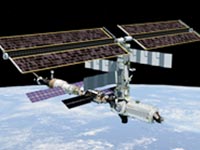‘There is no room for error’

Sriharikota, Sept 23:
The launch of Polar Satellite Launch Vehicle (PSLV) is similar to the one in April 2008 when ISRO launched 10 satellites.
The sequence of ejection is very similar to the April 2008 launch featuring one big satellite - Cartosat-2A and nine other nano satellites - 10 in all: once the PSLV takes off and reaches a certain height and velocity, it will first launch the Oceansat-2 and a few seconds later, the first of four nano satellites. Every 10-12 seconds, the PSLV will launch four satellites one after the other. (Two will remain with the fourth stage).
"The rocket re-orients itself everytime a satellite is to be placed in orbit. The re-orientation ensures one satellite doesn't collide with another. The rocket effectively re-orients itself four to five times in the space of one flight," a scientist explained.
"There is no room for error. The rocket has to be in flight till the last minute which means all systems on board have to function to perfection. Once the first and second stages separate, and the fourth stage (the engines) stop, the ejection process begins until every satellite circulates in orbit," an official said.
This will be PSLV's 16th mission. From September 1993 to April 2009, PSLV has been launched 15 times. Fourteen launches have been successful continuously while only one has failed so far.
ISRO spokesperson S Satish told TNN: "The PSLV has been a very successful launch vehicle particularly it is very well suited for launch of nano satellites. We were on to our 16th mission with PSLV and Germany and Swtizerland were looking for a mission. "
In the April 2008 launch, eight nano satellites were built by universities and research institutions in Canada and Germany.




 ISRO launches Oceansat-2
ISRO launches Oceansat-2